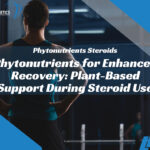Understanding Muscle Strains and Steroids
Muscle strains are common injuries that can occur during physical activity or sports. They happen when the muscle fibers stretch or tear, causing pain, swelling, and reduced range of motion. Common causes of muscle strains include overexertion, improper warm-up, fatigue, and direct impact. Do steroids help muscle strains? Let’s find out in this blog.
Steroids, on the other hand, are a type of medication that can have both positive and negative effects on muscle strains. Anabolic steroids, for example, may aid in the healing process by speeding up the recovery of force-generating capacity. Corticosteroids, on the other hand, can help reduce inflammation in the affected area.
However, it’s important to note that using steroids for muscle strains comes with risks. They can have side effects such as hormonal imbalances, cardiovascular problems, and a weakened immune system. It’s essential to consult with a healthcare professional before considering steroid treatment.
In the next sections, we will explore how steroids affect the muscle healing process, the types of steroids used for muscle strains, and alternative treatments for muscle strain recovery.
What are muscle strains and common causes?
Muscle strains are common injuries that can happen to anyone, especially if you’re active or into sports. They occur when your muscle fibers stretch or tear, causing pain and stiffness. It’s like pulling or overworking a muscle beyond its limits. The most common causes of muscle strains include pushing yourself too hard during physical activity, not warming up before exercising and feeling tired. A direct impact or sudden movement can sometimes lead to muscle strain. Remember to listen to your body and take breaks to avoid these injuries. Stay mindful of your limits and always prioritize your safety while staying active.
Do Steroids Help Muscle Strains?
Steroids, particularly anabolic and corticosteroids, have been used to aid in the healing process of muscle strains. Anabolic steroids may help speed up the recovery of force-generating capacity in muscle contusion injuries. They can promote muscle protein synthesis and increase muscle mass, which may aid in repairing damaged muscle fibers. Corticosteroids, on the other hand, are known for their anti-inflammatory properties. They can help reduce swelling and inflammation associated with muscle strains, relieving pain and discomfort. However, it’s important to note that while steroids may provide short-term benefits, they also come with risks and potential side effects. It’s essential to consult with a healthcare professional before considering steroid treatment for muscle strains to determine the best course of action for your specific situation.
How steroids affect the muscle healing process
Steroids can have a positive impact on the muscle healing process. Anabolic steroids, for instance, promote muscle protein synthesis and help increase muscle mass. It can aid in repairing damaged muscle fibers and speeding up the recovery of strength and function. Corticosteroids, on the other hand, are known for their anti-inflammatory properties. They help reduce swelling and inflammation associated with muscle strains, relieving pain and discomfort. By minimizing inflammation, corticosteroids create a more favorable environment for healing. However, it’s important to note that while steroids can be beneficial, they do come with potential risks and side effects. It’s crucial to consult with a healthcare professional to determine the appropriate use and dosage of steroids for your specific muscle strain.
Risks and benefits of using steroids for muscle strains
When it comes to using steroids for muscle strains, there are both risks and benefits to consider. On the positive side, steroids can help speed healing and promote muscle repair. They can also relieve pain and reduce inflammation, allowing you to recover quickly. However, it’s important to be aware of the potential risks associated with steroid use. Steroids can have side effects, such as hormone imbalances, mood swings, and increased risk of infection. Long-term use of steroids can also lead to dependency and withdrawal symptoms. It’s crucial to use steroids under the guidance of a healthcare professional and to carefully weigh the risks and benefits before deciding on this treatment option for your muscle strain.
Types of Steroids Used for Muscle Strains
Anabolic steroids and corticosteroids are the two types of steroids commonly used for muscle strains. Anabolic steroids work by promoting muscle growth and enhancing the healing process. They can help increase the recovery of force-generating capacity in the injured muscle. Corticosteroids, on the other hand, are anti-inflammatory drugs that can help reduce inflammation and provide pain relief. They often treat acute muscle strains and can help speed up the healing process. It’s important to note that these two types of steroids have different effects and uses for muscle strains. Your healthcare professional will determine which type of steroid suits your specific condition.
Anabolic steroids and their impact on muscle repair
Anabolic steroids have a significant impact on muscle repair. Anabolic steroids promote muscle growth and enhance the healing process. It means they can help your injured muscles recover faster and regain strength. Anabolic steroids increase the recovery of force-generating capacity in the injured muscle, allowing you to return to your activities sooner. They stimulate protein synthesis in the muscle cells, increasing muscle mass and strength. Remember, it’s important to use anabolic steroids responsibly and under the guidance of a healthcare professional to avoid any potential side effects. But when used properly, anabolic steroids can be highly effective in helping you recover from muscle strains.
Corticosteroids and their role in reducing inflammation
Corticosteroids play a vital role in reducing inflammation caused by muscle strains. These powerful medications suppress the immune system’s response to injury, decreasing swelling, redness, and pain. When injected directly into the injured muscle, corticosteroids work quickly to provide relief and promote healing. They can help you recover from muscle strains by reducing inflammation and allowing the muscle to heal more efficiently. It’s important to note that corticosteroids should be used under the guidance of a healthcare professional, as they can have potential side effects. However, when used responsibly, these medications can effectively manage pain and inflammation associated with muscle strains, helping you get back to your activities faster.
Alternatives to Steroid Treatment for Muscle Strains
Physical therapy and rehabilitation options are common alternatives to steroid treatment for muscle strains. These approaches focus on strengthening the injured muscle, improving flexibility, and promoting overall healing. A physiotherapist can guide you through specific exercises and techniques to aid in your recovery. They may use various modalities such as ultrasound, heat, or cold therapy to reduce inflammation and relieve pain. Additionally, natural remedies and supplements can promote muscle strain recovery. Anti-inflammatory herbs like turmeric and ginger and nutrients like omega-3 fatty acids may help reduce inflammation and support healing. Remember to consult a healthcare professional before starting alternative treatments to ensure they are appropriate for your condition. By exploring these alternatives, you can find effective ways to recover from muscle strains without relying on steroid treatment.
Physical therapy and rehabilitation options
Physical therapy and rehabilitation are excellent alternatives to steroid treatment for muscle strains. During physical therapy sessions, you will work with a qualified therapist to guide you through specific exercises and techniques to strengthen the injured muscle and improve flexibility. These exercises help promote healing and prevent further injury. Additionally, the therapist may use ultrasound, heat, or cold therapy to reduce inflammation and relieve pain. Physical therapy focuses on restoring function and mobility to the injured muscle, allowing you to regain strength and return to normal activities. By following a personalized rehabilitation plan, you can effectively recover from muscle strains without relying on steroids.
Natural remedies and supplements for muscle strain recovery
You can consider natural remedies and supplements to complement your muscle strain recovery. Incorporating these into your routine may help speed up the healing process. Consuming foods rich in anti-inflammatory properties, such as turmeric, ginger, and fatty fish, can assist in reducing inflammation in the muscles. Additionally, supplements like omega-3 fatty acids and vitamin C can promote muscle repair and reduce oxidative stress. Natural remedies like arnica gel or creams can relieve pain and alleviate swelling. Remember to consult your healthcare provider before trying new supplements or natural remedies to ensure they are safe. By combining these natural approaches with other forms of treatment, you can support your muscle strain recovery and get back to your active lifestyle sooner.
Conclusion
In conclusion, the use of steroids for muscle strains can have both benefits and risks. While anabolic steroids show potential for enhancing muscle repair, their long-term effects and potential side effects need further research. Corticosteroids can help reduce inflammation in the short term but may hinder long-term muscle repair. It is essential to consider the individual circumstances and consult with a healthcare professional before considering steroid use for muscle strains.
Alternatively, physical therapy and rehabilitation offer effective non-steroidal options for muscle strain recovery. Focusing on gradual strengthening and flexibility exercises can help improve muscle strength and function. Additionally, natural remedies and supplements, such as anti-inflammatory foods and supplements like omega-3 fatty acids and vitamin C, can support the healing process.
Ultimately, finding the right muscle strain recovery approach depends on your situation. Discussing all options with your healthcare provider to determine the best course of action for your individual needs is crucial.






